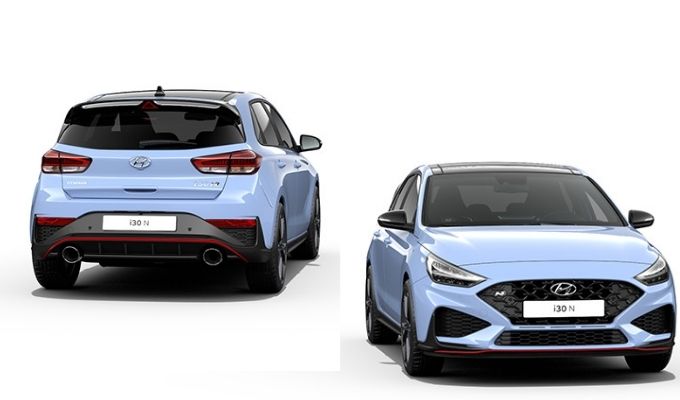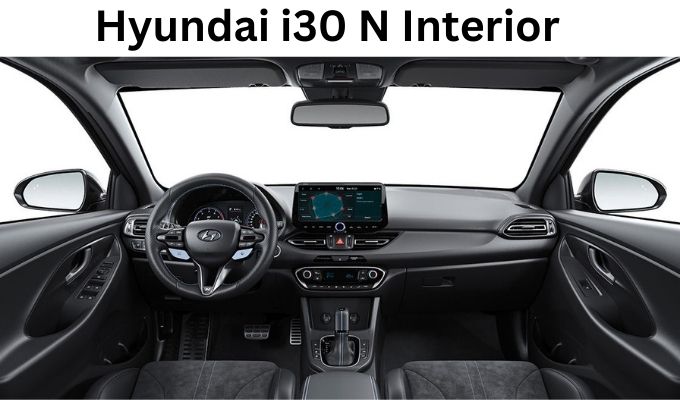Hyundai i30 N 2024 Review
Is it possible for a hot hatch to be both under the ryder and over the top? If it’s the Hyundai I 30 N sedan, then definitely people don’t normally associate perform its pocket rockets with a traditional four door sedan.
The N sedan is a slightly bigger brother to the iconic end hatch and is the effective replacement for the dearly departed fast back version of the N big shoes to fill.
Pricing and features
Now the I 30 Sedan N has few rivals, but one of them is the rather excellent Subaru, WRX and the other, well, it’s the Mercedes-Benz A 35 Sedan, the 4 Matic, which starts at 40k more.
And speaking of pricing you are also approaching $90,000 before you can get the Merckx other German competitors, the sleek Audi S3 Quattro, and BMWM M 335 I Grand Coupe on the road.
This then leaves the WRX as the Hyundai sole affordable four door hot sedan alternative.
Regardless of whether it’s a manual or auto, the facelift I 30 Sedan N for 2024 is only available in the one premium grade kicking off from $52,000 before on row cost.
So it costs a bit more than before, yet the changes are more far reaching than they might seem at first glance.
Along with new LED headlights featuring signature full width light bar bumpers and alloys, it gains a strengthened body structure, an array of detailed steering and suspension improvements, upgraded driver assist safety tech, updated multimedia including USBC ports and real-time connected car services.
The Hyundai calls blue link that can notify emergency services automatically if you’ve had a prank.
| striking body kit | electronic control suspension |
| Differential performance driving modes | adaptive cruise control |
| uprated ventilated brake package | leather upholstery |
| heated and vented sports seats up front | dual-zone climate control |
| Michelin pilot sport tires on 19-inch alloys | ambient lighting |
| regular end gear | driver assist tech |
The only options are a $2,000 sunroof and $595 premium paint. That’s all pretty compelling value for money, especially for a car of this size.
Design
Now, in most cases, more is less when you add spoilers and body kits and all that sort of stuff to a regular sedan.
But in the I 30 sedan ends case, I think more is actually more because the bits that they have changed, such as the red detailing and the larger spoilers and the special LED lights and all that sort of stuff, I think they enhance the look of the car and around to the side with beautiful large black alloys and the red breaking, detailing and the side skirts.

They, I think they make the fussy regular I 30 sedan slightly less so because they draw the eyes away.
So it’s still this flowing, quite striking fast back silhouette, but in this case I think it gels together better than I expected it to. Having said that, for some people it’s still quite an ugly looking car, I think.
Well, I think I’ve got a foot in both camps there.
Practicality
The interior small hot sedan rivals would struggle to match the I 30 sedan ends sheer practicality running on a newer generation architecture, also shared with the latest Hyundai Kona, SUV.
This is actually the seventh generation Elantra, meaning that it is also a substantially larger, longer and wider proposition than the I 30 N hatch.

As a result, the driver and passenger have plenty of space to stretch out in. It really does feel like a car from the next size up being the I 30 flagship version.
The end premiums dashboard is also dressed up to look suitably upmarket with its vast dashboard design offering twin 10.25 inch screens and end specific configurable instrumentation while blue stitch leather trim and darker cabin elements ibu it all with a racer feel.
You shouldn’t be surprised to learn that there’s a performance monitor within the touchscreen with all sorts of vehicle and driving data, including a lap timer.
There’s also a big red button under one of the steering wheel spokes that’s cringingly labeled NGS for N grin shift created for racetrack use.
It adds an extra seven kilowatts of power for 20 seconds of extra overtaking muscle. Speaking of fast driving, lowered sports seats provide sufficient bracing through tight corners while all the regular practicality features found in the everyday I 30 sedan, like the excellent driving position, ample ventilation, easy controls and tons of storage are also present.
The same applies across the generous backseat area, which lacks nothing for expected amenities to help keep kids comfy, safe, hydrated and plugged in while the slightly smaller boot down 10 liters compared to the regular I 30 sedan means it’s still large enough for most family needs.
Blame the N chassis stiffness brace fitted back there, a space saver spare lives under the wide flat floor.
The I 30 sedan, the regular version as having a bit of a a car ambience inside and that was of course the base hybrid version.
But gee, going from 33 to $52,000 in this car really is obvious when you sit inside and experience the great front seats.
They are sumptuously comfortable. The steering wheel has these paddle shifters , as well as driving modes that create a configurable sport or eco setting that can really turn the wick up to 11 if you need to, in terms of hot hatch fun, the ambience as a result is so much better in the end the use of, black trim and the subtle ambient lighting as well as the sunroof in this particular model and the piping on the perforated leather seats, it all just adds up to something that feels far more special than you expect.
So really I have got hardly any complaints about the I 30 N interior. it’s a really well resolved interior well done Hyundai.
Under the bonnet
Make no mistake, the heart and soul of the Hyundai I 30 sedan N is right under Bonnet.
The engine itself carries over from before, meaning it’s a two liter turbocharged four cylinder direct injection unit making 206 kilowatts of power and 392 nanometers of torque tipping the scales at 1,475 kilograms.
The resulting power to weight ratio is an impressive 140 kilowatts per ton. And don’t forget pressing the end grin, shift button ups power to 230 kilowatts for a 22nd burst.
Refreshingly traditionalists can still choose a six speed manual oral, be it with a rev matching function or an eight speed wet type dual clutch transmission.
And both drive the front wheels via an electro mechanical limited slip diff mechanical improvements for 2024 include better brake cooling and fading resistance.
Stronger engine mounts for improved agility, more insulation reduced vibrations, upgraded steering components for even more precise handling and tweaks to the stability control system.
By the way, suspension is by my first and install struts up front and a multilink rear end arrangement.
Efficiency
The I 30 N DCTs official combined average consumption is 8.3 liters per 100 kilometers. Around town That should shoot up to 11.8 or drop to just 6.3 outside of urban areas.
You’ll need to add about 0.2 liters per 100 kilometers a piece for the less efficient, but some say more fun manual version filling the 47 liter tank with 95 run premium and letter petrol, you could exceed 565 kilometers between refills on average with a combination of gentle highway schlepping and blasting through the hills around the fast rural roads.
Safety
Hyundai’s pretty confident that it would score highly thanks to a raft of standard driver assist safety items such as a EB with pedestrian and cyclist detection as part of its forward collision avoidance assist system, blind spot monitoring, safe exit warning, rear cross traffic alert and adaptive cruise control with full stop go functionality.
Ownership
The I 30 sedan N brings a five year unlimited kilometer warranty as well as one year of roadside assistance.
Service intervals are at 12 months or 10,000 kilometers. With service pricing published on Hyundai’s website over the first five years, expect to pay around $1,800 or on average about $360 annually.
Out on the hilly roads around Aubery, the I 30 Sedan Inn fills in its absolute element due to the mixture of long open straits and tight corners that show off Hyundai’s incredible chassis tuning capabilities egged on by an active variable exhaust stone.
The two liter four pot twin scroll turbo has a very deep set of lungs providing a decent wad of torque as it revs out fast and freely to its 6,000 RPM red line.
Whether driving the slick yet weighty six speed manual, which surely is one of the best in the business or super fast eight speed DCT, there’s a delightful amount of muscle and speed for the money.
We’re also fans of the steering’s poise and response resulting in hunkered down handling that quite belies.
This car’s substantial length and width backed up by plenty of feel and feedback factor in superb braking.
And the I 30 N is incredibly alert and agile for something so big. The trade off of all this athleticism is a firm but not harsh ride as well as some tire and road noise intrusion when cruising comfortably along the highway.
Out on the road track though is where the I 30 sedan N really shines the I 30 N, whether it’s a sedan or a fastback, which is certainly discontinued or the hatch is just one of those cars that is a pussycat when you need it to be and a tiger when you want it to be.
